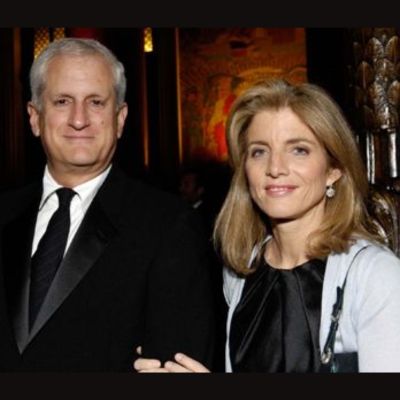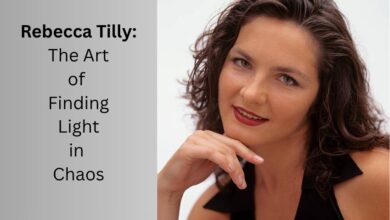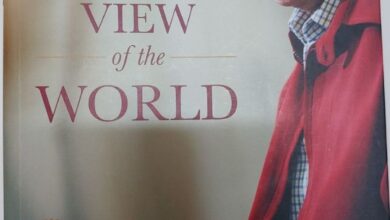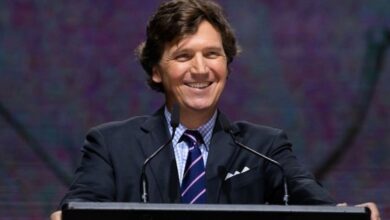Edwin Schlossberg – A Visionary of Interactive Experience Design

Born on July 19, 1945, in New York City, Edwin Schlossberg emerged from an upbringing steeped in intellectual curiosity and cultural depth. His parents, Alfred I. Schlossberg and Mae Hirsch, were children of Ukrainian immigrants and members of an Orthodox Jewish community on Manhattan’s Upper East Side. He attended the Park East Synagogue and studied Hebrew in his youth, grounding himself in both tradition and inquiry.
After graduating from the Birch Wathen School, Schlossberg entered Columbia University, where he completed his B.A., M.A., and ultimately a Ph.D. in Science and Literature in 1971. His doctoral thesis, an imaginative “conversation” between Albert Einstein and Samuel Beckett, revealed his inclination for blending disciplines, narrative, and form—traits that would later define his career.
From Artist to Experience Designer
Schlossberg began his professional life as an artist and poet in the 1960s New York art scene. He experimented with unconventional media such as aluminum foil, plexiglass, and embossing, creating typewritten poetry that blurred the line between text and sculpture.
In 1977, he received a commission to redesign the Brooklyn Children’s Museum, transforming it into one of the first truly interactive, hands-on museum environments in the United States. The success of that project led him to found ESI Design, a studio that would go on to redefine how people interact with information, culture, and public spaces.
The Philosophy: Learning Through Interactivity
Schlossberg’s guiding belief is that design should invite participation and discovery rather than passive observation. He often compares good design to placing a bucket of water in front of a child—something so simple yet endlessly engaging. His goal is to create environments that inspire curiosity, foster play, and allow individuals to shape their own experiences.
He has long argued that design should be centered around human needs and behaviors. For Schlossberg, the real challenge lies not in making things look beautiful, but in crafting experiences that invite exploration, connection, and reflection.
Major Milestones and Signature Projects
Over the decades, Schlossberg and ESI Design have delivered a vast range of projects across museums, corporate environments, and public spaces. Some of his most notable achievements include:
- Ellis Island – American Family Immigration History Center: A groundbreaking interactive environment allowing visitors to explore personal and historical narratives of immigration.
- Statue of Liberty Museum: Opened in 2019, this project reimagined the visitor experience of one of America’s most iconic landmarks through immersive exhibits, digital storytelling, and symbolic design.
- Corporate and retail innovation spaces: From technology companies to financial institutions, ESI Design has worked with global brands to craft spaces that blend technology, architecture, and storytelling.
- National appointments and honors: In 2011, Schlossberg was appointed to the U.S. Commission of Fine Arts by President Barack Obama. In 2020, he was recognized as a Fellow by the Society for Experiential Graphic Design for his pioneering work in interactive audience engagement.
Style, Media, and Innovation
Schlossberg’s background as an artist and poet continues to influence his design practice. He treats language, space, and material as interconnected media, using them to create experiences that stimulate both intellect and emotion.
His work embraces technology as a natural extension of human creativity. He has integrated digital media, motion graphics, sensors, and data visualization into physical environments long before such tools became commonplace. Yet, for him, technology is never the centerpiece—it is a tool to enhance storytelling and engagement.
His signature lies in designing spaces that are alive, participatory, and personal. Whether crafting a museum exhibit or a retail installation, Schlossberg ensures that every visitor becomes a co-creator of the experience.
Impact and Legacy
Edwin Schlossberg’s influence can be traced through several key dimensions:
- Educational environments: He transformed museum and educational design by emphasizing interactivity and exploration over static presentation.
- Corporate and public spaces: His work demonstrated that the same principles that make learning environments engaging can make workplaces and retail spaces dynamic and memorable.
- Thought leadership: Through books such as Interactive Excellence: Defining and Developing New Standards for the 21st Century, Schlossberg outlined a philosophy that continues to shape the fields of design and media.
- Mentorship and collaboration: He has lectured at major universities and design schools, mentoring generations of creators who blend art, science, and experience design.
Schlossberg’s greatest contribution is perhaps his insistence that design is not decoration—it is dialogue. By turning audiences into participants, he reshaped how we understand the relationship between people and the spaces they inhabit.
Personal Life
On July 19, 1986, Schlossberg married Caroline Kennedy, daughter of President John F. Kennedy and Jacqueline Kennedy Onassis. Together they have three children: Rose, Tatiana, and Jack. Despite his connection to one of America’s most famous families, Schlossberg has largely remained out of the political spotlight, focusing on his artistic and design pursuits.
His personal story also reflects a deeper resonance with his professional work. As the grandson of immigrants, he has explored themes of identity, movement, and belonging throughout his career—most poignantly in projects like the Ellis Island Immigration Center, where the experiences of countless immigrant families are celebrated through storytelling and interactivity.
Reflections on Design’s Future
Even as technology continues to evolve, Schlossberg remains firm in his belief that the essence of good design is human connection. Immersive tools, digital media, and artificial intelligence can enhance experience, but the designer’s role, he insists, is to encourage wonder, empathy, and participation.
His later projects, such as the Statue of Liberty Museum, illustrate this balance perfectly: combining the latest digital innovations with timeless human narratives about freedom and hope. The museum’s design doesn’t just display history—it makes visitors part of it.
Why His Work Matters Today
Schlossberg’s work is more relevant than ever in a world dominated by screens and digital distraction. His career offers a powerful reminder that real engagement comes from touch, movement, and shared experience. He bridges art and science, technology and storytelling, showing that design can be both analytical and emotional.
In museums, retail spaces, and public landmarks, his influence endures through a simple yet profound idea: that interaction is the gateway to understanding. His philosophy encourages us to approach learning and communication not as linear transactions but as evolving, collaborative acts.
Closing Thoughts
From experimental artist to global design visionary, Edwin Schlossberg has built a legacy that spans more than five decades. His journey embodies the evolution of modern experience design—where architecture meets narrative, and where technology serves imagination.
He continues to inspire new generations of designers, educators, and innovators who seek to create environments that teach, connect, and transform. His designs are not just structures; they are invitations—to learn, to play, and to discover the world anew.
At Newsta, we celebrate creative minds like Edwin Schlossberg, whose work reminds us that the future of design lies not in spectacle, but in meaningful experience.
Thanks for read our article if you want more like this kind of article visit our site Newsta, and comment us. We provide authentic & comprehensive information to our readers.



